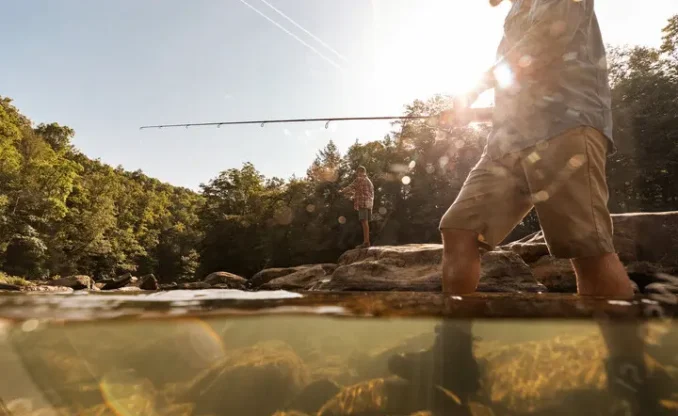Excellent Food and Cover
Downy Arrowwood – V. rafinesquianum
Dockmackie (Maple-leaf Arrowwood) – V. acerfolium
Viburnum Family – Small trees or shrubs, deciduous with opposite, simple leaves that have smooth, toothed or lobed edges. Clusters of white rounded or flat-topped flowers that mature into fruits (drupe) of fleshy outside enclosing a single stone seed in late summer or fall.
Form
Black Haw-Large shrub or small tree to 25 feet tall, compact crown, trunk short and crooked.
Downy Arrowwood – Shrub to 6 feet tall, much branched with upright straight stems.
Dockmackie – Shrub to 6 feet tall (usually 3 to 4), straggling and open.
Leaves
Black Haw-Oval, pointed to blunt tips, fine teeth on margin, smooth leathery, fall foliage dark purple to scarlet.
Downy Arrowwood – Roundish, short or no petiole, coarse teeth on margin, heart shaped base, long downy hairs beneath, fall foliage yellow to light scarlet.
Dockmackie – Roundish, deeply 3-lobed (similar to red maple), course teeth on margin, velvety hairs beneath, fall foliage purple.
Flowers and Fruit
Black Haw- Numerous creamy white clusters that are showy (April-June); matures to edible dark blue to black fleshy fruits with a sweet pulp, September-October.
Downy Arrowwood – Small white clusters on long stems in June-July; matures to a small black fruit in autumn.
Dockmackie – Showy clusters of white flowers on long stems in May and June; matures to a small black fruit in autumn.
Natural Habitat
Black Haw- Open hillsides, margins of woodlands, and dry old fields.
Downy Arrowwood – Dry rocky woods and open banks.
Dockmackie – Dry rocky woods.
Wildlife Uses
The fruits which ripen in late summer or fall are preferred by many kinds of wildlife but are not critically important food. Fruits will attract deer, chipmunk, cedar waxwing, ruffed grouse and the brown thrasher. The twigs and foliage are also eaten by deer. Nesting sites and shelter are provided by all Viburnums. Black Haw is excellent in providing medium height nest sites (10 to 20 feet high) and Dockmackie grows extremely well in shade where it provides low (1 to 3 feet high) nest sites and shelter.
Horticulture
Uses: Border, screen, groups. Black Haw can be planted as a specimen tree if pruned to maintain a single stem. Dockmackie works well in rock gardens if planted in the shade.
Light: Black Haw and Downy Arrowwood – full sunlight. Dockmackie – Prefers dense shade.
Soil Moisture: Moist to dry (Black Haw is very adaptable).
Soil pH: Acid to neutral.
Problems: Fairly free of problems. Black Haw is occasionally bothered with scale and borer insects.
Compiled by: William N. Grafton, naturalist, botanist and wildlife extension specialist, West Virginia University , Morgantown , West Virginia .
Written by West Virginia Native Plant Society members and jointly published with the WV Wildlife Diversity Program.



